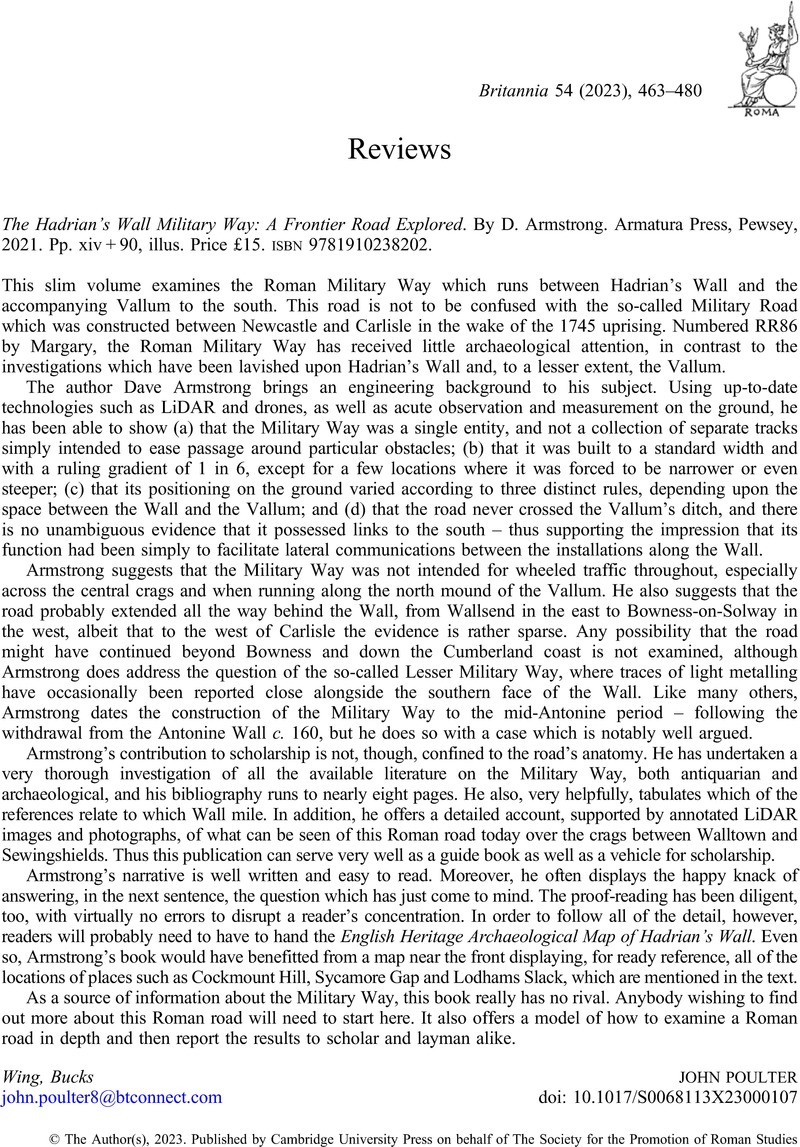No CrossRef data available.
The Hadrian's Wall Military Way: A Frontier Road Explored. By D. Armstrong. Armatura Press, Pewsey, 2021. Pp. xiv + 90, illus. Price £15. isbn 9781910238202.
Review products
The Hadrian's Wall Military Way: A Frontier Road Explored. By D. Armstrong. Armatura Press, Pewsey, 2021. Pp. xiv + 90, illus. Price £15. isbn 9781910238202.
Published online by Cambridge University Press: 12 April 2023
Abstract
An abstract is not available for this content so a preview has been provided. Please use the Get access link above for information on how to access this content.

- Type
- Reviews
- Information
- Copyright
- Copyright © The Author(s), 2023. Published by Cambridge University Press on behalf of The Society for the Promotion of Roman Studies


